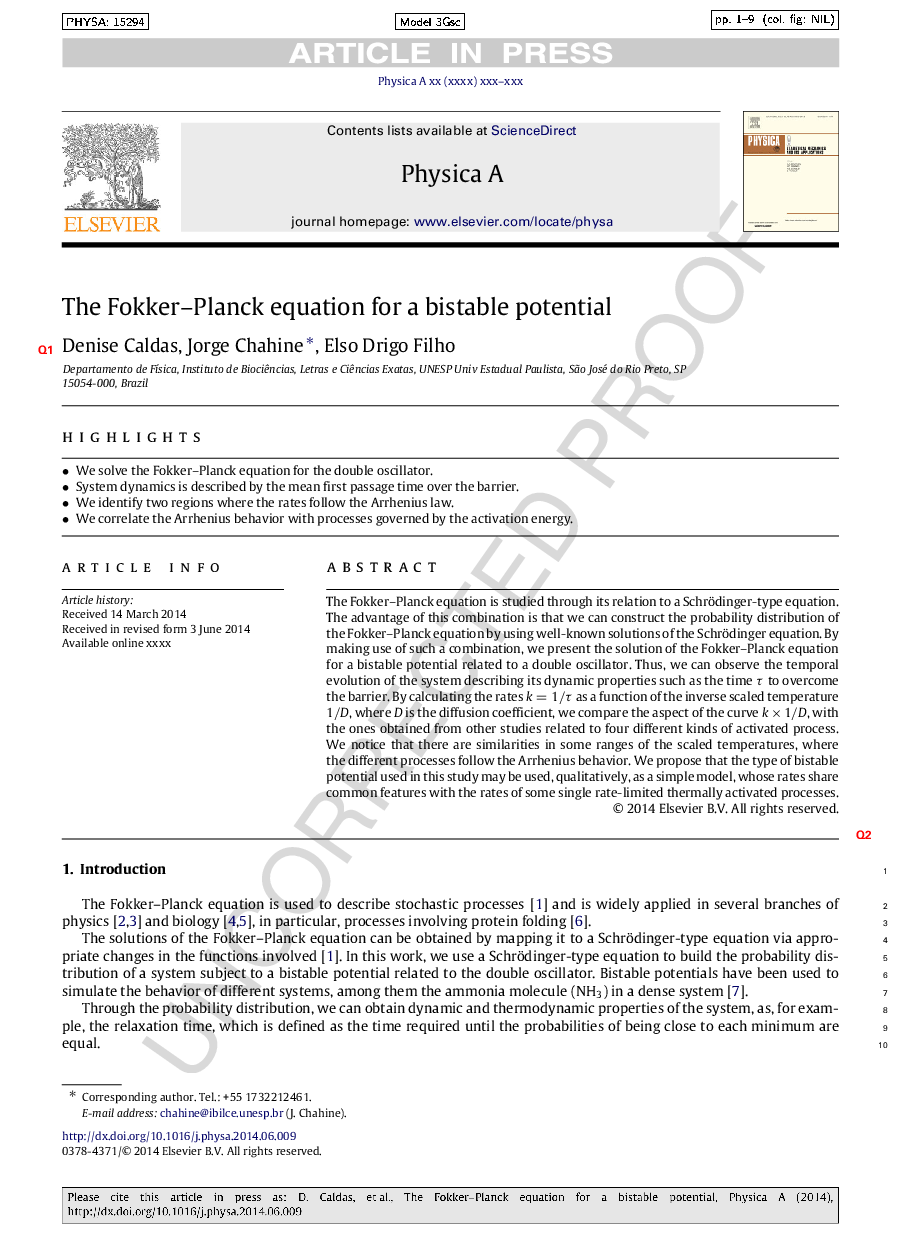| Article ID | Journal | Published Year | Pages | File Type |
|---|---|---|---|---|
| 7380310 | Physica A: Statistical Mechanics and its Applications | 2014 | 9 Pages |
Abstract
The Fokker-Planck equation is studied through its relation to a Schrödinger-type equation. The advantage of this combination is that we can construct the probability distribution of the Fokker-Planck equation by using well-known solutions of the Schrödinger equation. By making use of such a combination, we present the solution of the Fokker-Planck equation for a bistable potential related to a double oscillator. Thus, we can observe the temporal evolution of the system describing its dynamic properties such as the time Ï to overcome the barrier. By calculating the rates k=1/Ï as a function of the inverse scaled temperature 1/D, where D is the diffusion coefficient, we compare the aspect of the curve kÃ1/D, with the ones obtained from other studies related to four different kinds of activated process. We notice that there are similarities in some ranges of the scaled temperatures, where the different processes follow the Arrhenius behavior. We propose that the type of bistable potential used in this study may be used, qualitatively, as a simple model, whose rates share common features with the rates of some single rate-limited thermally activated processes.
Related Topics
Physical Sciences and Engineering
Mathematics
Mathematical Physics
Authors
Denise Caldas, Jorge Chahine, Elso Drigo Filho,
